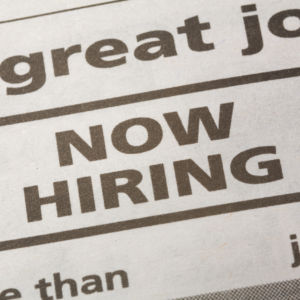The U.S. economy continued its slow but positive economic growth with the addition of 161,000 new jobs during the month of October, according to a federal report Friday.
The Bureau of Labor Statistics (BLS) tracks national employment growth on a monthly basis. The monthly reports have found that the economy has improved greatly since the last recession, almost a decade ago, but at a very slow rate. The labor market continued the trend by gaining an additional 161,000 jobs this past month.
“Total nonfarm payroll employment rose by 161,000 in October,” the report stated. “Thus far in 2016, employment growth has averaged 181,000 per month, compared with an average monthly increase of 229,000 in 2015. In October, employment continued to trend up in health care, professional and business services, and financial activities.”
The economy is in a relatively good position when it comes to employment growth. The labor market has even managed to reach close to full employment. Nevertheless, the slow growth and other market indicators have shown it could be much better.
“It’s been moderate,” Ethics and Public Policy Center Economist John Mueller told InsideSources. “I think the expectation is for about 170,000 jobs a month which is on the below average side but it’s positive and it continues to be decent, and I think it reflects the middling growth of the economy.”
The unemployment rate is just one indicator for assessing the health of the labor market. Market indicators elsewhere have not been as positive. The labor force participation rate, for instance, has failed to reach the level it was at before the recession.
The labor participation rate tracks the number of employed and those actively seeking work as a percentage of the total population. The participation rate factors in those who have suffered long-term joblessness, unlike the employment rate.
“The problem is the reason these numbers have actually gone down is very often for the wrong reasons,” Mercatus Center Fellow Veronique de Rugy told InsideSources. “People have given up on looking for jobs, and also there is a lot of underemployment in the economy which is a problem.”
The labor force participation rate has shown a slight improvement over the last few months. Nevertheless, it has failed to even get close to where it was before the recession. Mueller blames social welfare benefits as a primary reason for why the participation rate has been so low.
“What tends to weigh on employment is the low labor force participation rate,” Mueller said. “That, I think, has to do with the increase in the last several years of social benefits to people that are outside the labor force. Unemployment benefits were increased sharply in response to the recession.”
The recession left a lot of people out of work or in jobs below their usual income levels. The federal government responded by opening access to social programs like food stamps and unemployment insurance. There have been efforts on the state and federal levels in recent years to rein in some of those benefits.
“It had the effect of causing more people to collect unemployment insurance than would have otherwise been the case,” Mueller said. “That resulted in an increase of people collecting unemployment insurance and who were delaying going back to work. As these benefits have tapered down, we have seen somewhat faster job growth.”
The Gross Domestic Product (GDP) last month showed a positive increase after being stuck around one percent. The Bureau of Economic Analysis found it jumped to 2.9 percent in the third quarter of this year. Mueller notes the jump came as a surprise to some who thought it would remain low because interest rates could soon rise.
“I think that’s partly because most economists misinterpret what effect the Federal Reserve interest rate policy has on the economy,” Mueller said. “Counter-intuitively what happens when interest rates start to move up is that the economy tends to actually accelerate somewhat.”
Mueller adds that when businesses or households see interest rates start to go up they act. They might see the increase as a sign they should take a loan before interest rates get any higher. Mueller adds the jump is likely a short-term result of increasing interest rates.
President Barack Obama has faced a stagnant economy throughout his entire administration. The recession was sparked by the subprime mortgage crisis and the financial crisis of 2007. De Rugy blames how the government responded to the recession for why the recovery has been so slow.
“They responded with massive stimulus, increases in debt; they responded with a lot of heavy regulations,” de Rugy said. “They’ve done a lot of counterproductive things which really affects the labor market, financial market and overall economic growth. It’s a combination of all this.”
Professional and business services saw the most significant increase in new jobs at 43,000 followed by healthcare and financial activities. Mining employment numbers changed little in October. Mining has decreased by 220,000 jobs since reaching its peak in September 2014.
Average wages increased by 10 cents and now sit at $25.92 for the month of October. The jobs report does not include farm workers, private household employees or nonprofits.

